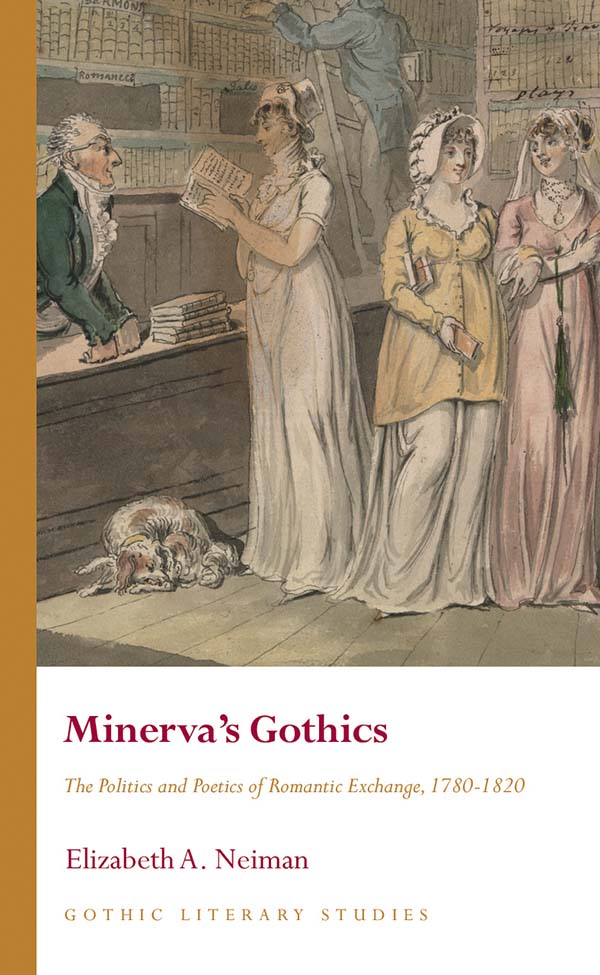Minerva’s Gothics
The Politics and Poetics of Romantic Exchange, 1780-1820
Author(s) Elizabeth Neiman
Language: English
Genre(s): Literary Criticism
Series: Gothic Literary Studies
- February 2019 · 304 pages ·216x138mm
- · Hardback - 9781786833679
- · eBook - pdf - 9781786833686
- · eBook - epub - 9781786833693
Between 1790 and 1820, William Lane’s Minerva Press published an unprecedented number of circulating-library novels by obscure female authors. Because these novels catered to the day’s fashion for sentimental themes and Gothic romance, they were and continue to be generally dismissed as ephemera. Recently, however, scholars interested in historicizing Romantic conceptions of genius and authorship have begun to write Minerva back into literary history. By making Minerva novels themselves the centre of the analysis, Minerva’s Gothics illustrates how Romantic ‘anxiety’ is better conceptualized as a mutual though not entirely equitable ‘exchange’, a dynamic interrelationship between Minerva novels and Romantic-era politics and poetics that started in 1780, when Lane began publishing novels with some regularity. Reading Minerva novels for their shared popular conventions demonstrates that circulating-library novelists collectively recirculate, engage and modify commonplaces about women’s nature, the social order and, most importantly, the very Romantic redefinitions of authorship and literature that render their novels not worth reading. By recognizing Minerva’s collaborative rather than merely derivative authorial model, a forgotten pathway is restored between first-generation Romantic reactions to popular print culture and Percy Shelley’s influential conceptualization of the poet in A Defence of Poetry.
Table of Contents
Preface:
Chapter 1: Remapping Minerva’s influence on the novel market
Section One: Feminist Discernment and Minerva’s
Production of Romantic Fantasy
Section Overview
Chapter 2: Julies and St. Preuxes: Networking ‘lady’ authors, 1785-9
Chapter 3: Wollstonecraft and the revolutionary feminist novel:
At a crossroads with Wordsworth
Section Two: The Revolution Debate in Britain: Minerva and the Politics of Feeling
Section Overview
Chapter 4: Providential adaptations to the romantic fantasy, 1790-4
Chapter 5: Godwin and Providential feeling in Things As They Are:
Meeting readers where they are
Chapter 6: Providential feeling at Minerva’s zenith: what the commoner teaches the nobleman
Section Three: The Forgotten Poetics of Romantic Exchange: Gothic Habits of Mind
Section Overview
Chapter 7: Minerva’s continued influence: the Poet as Nightingale in Shelley’s 1810 Gothics
Chapter 8: Reinstating romantic fantasy in Minerva’s ‘late’ novels: Romanticism and ‘Gothic’ habits of mind
Afterword
Bibliography
List of Tables:
List of Figures:


